Was I Really Wading in the Sea of Galilee?

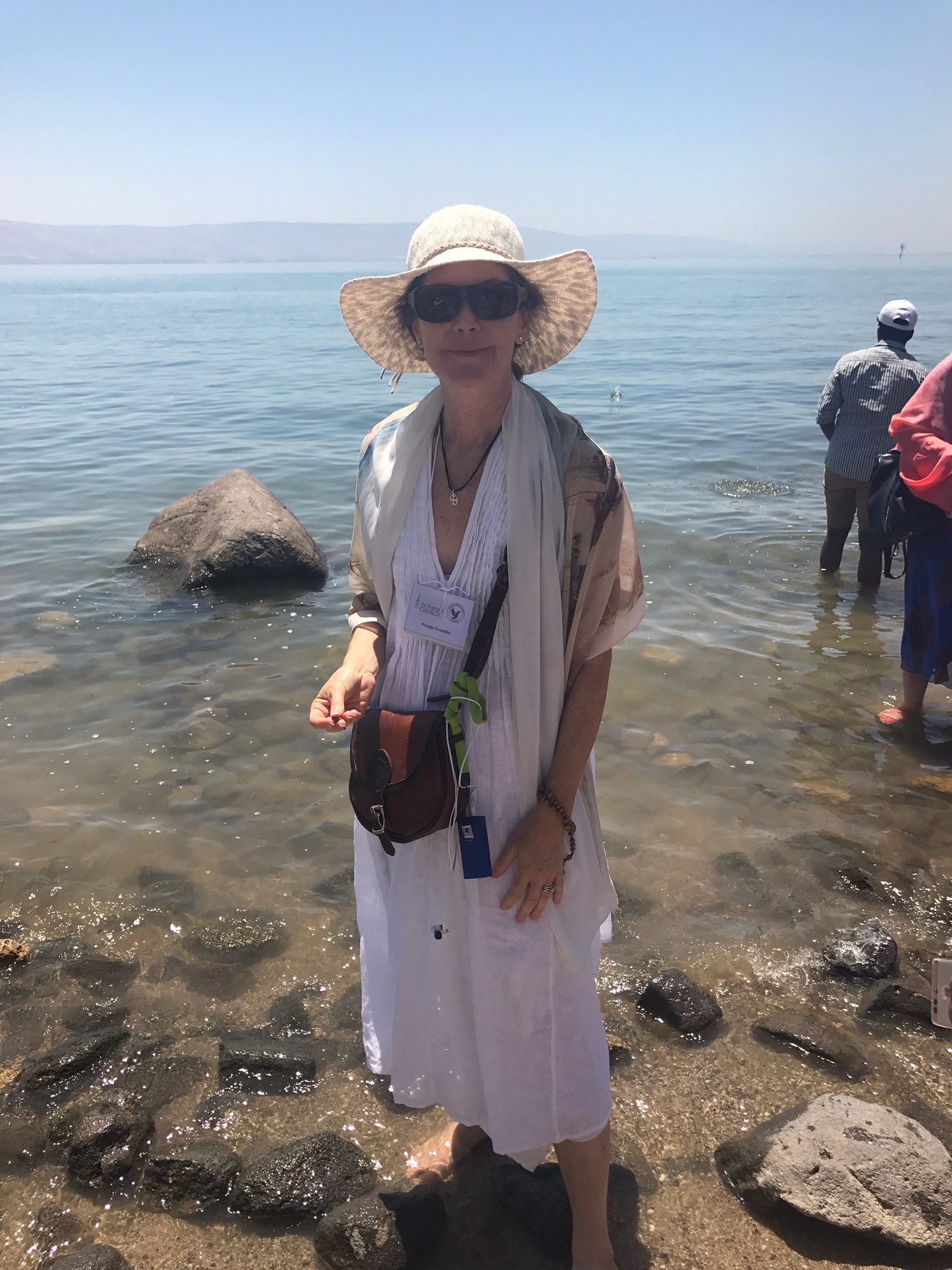 This is the first of a three-part series describing a pilgrimage to the Holy Land taken with St. Philips Church, May 8 – 20, 2017.
This is the first of a three-part series describing a pilgrimage to the Holy Land taken with St. Philips Church, May 8 – 20, 2017.
by Pringle Franklin
ON THE SEA OF GALILEE— This morning, we took a leisurely cruise across the gentle lake where Jesus called his fishermen disciples. We had bathed here the previous night, and the water was slightly cold, with a muddy lake bottom. The waters were churning and I could not see where I was stepping, and at intervals I would encounter slippery rocks or, worse yet, something scaly that would move across my feet.
“These crabby things are getting me,” I yelped, feeling vulnerable.
“Don’t worry, it’s only fish,” someone from our church group said, laughing.
“It doesn’t feel like fish, it feels like crabs with claws,” I said. After the third close encounter, I decided to sit on the pebbled beach and drink a beer in safety.
Later that night, the mystery of the foot ticklers was uncovered. Our St. Philips group had gathered for wine, conversation, and moon bathing in the garden patio overlooking the “sea”. Without swimmers, the waters were clear now and despite the night sky above, we could see down into the water thanks to the full moon and spotlights from the hotel. Right where we had been bathing, sIx black catfish were circling around. Those fellows were huge; I could clearly see their shaggy whiskers.
“That’s what I was feeling on my feet!” I said, feeling both relieved and creeped out.
The catfish seemed fearless, and they were far longer than any I had ever seen; someone told us that the local Jews were forbidden from eating them, for religious reasons. Obviously those fish did not realize these swimmers were from South Carolina where fried catfish is considered a mighty fine meal!
Next time, they will have to be more careful.
****
Am I really in the fabled Holy Land?
The reaction of pilgrims to this sacred landscape varies: some feel overwhelmed by emotion and the proximity to the earthly life of Jesus. I have felt rather the opposite; it is hard to reconcile this actual physical place with the stories of the Bible. How could these placid wasters, where flat-roofed, seven-story hotels fill the lakefront slope of Tiberius, truly be the same spot that I have visited in my imagination countless times? One thing is clear: Jesus and his pilgrims have been spun into an enormous business.
On the Sea of Galilee, which our guide explained is a lake that a long-ago translator mistakenly called a sea, the tourist groups line up to board the quaint wooden party-style boats. One group gets off, another is queued up to embark. On board, our Palestinian Christian guide Hanni told us that 11 of the disciples called by Jesus were from Galilee. (Guess who the outlier was? Judas, but we won’t go down that rabbit hole.)
Let’s focus on a different disciple. As we glided across the lake, Hanni explained why Simon Peter had been fishing naked, as described in one of the gospel stories. That detail was always a subject of conjecture amongst modern Christians. “Peter was naked because he was the diver that day,” Hanni said.
These guys fished with wide nets. Often their drag nets would get caught on submerged rocks in the lake, and the fishermen might accidentally rip the woven nets if they tried to free them by vigorous pulling motions.
The solution was that one member of each group would serve as the diver, ready to jump into the lake and release the net as needed. Of course their robes were unsuitable for swimming, so the rescuer would have to jump in naked.
Suddenly Peter’s having been fishing in the nude made complete sense. Chalk that up as one mystery solved! So many little details that seem odd or confusing to the devoted Bible reader back home become clear when you are given the scenery and the context.
Another revelation came in Cana at the church that commemorates Jesus having turned water into wine at the wedding. It turns out the “cleaning vessels” that Jesus used for this transformation were almost the size of modest hot tubs. I had always pictured him converting water that was inside of a large earthen water vessel with two handles, not a semi-bathtub carved from stone, and he was generous enough to have the servants put water into six of these reservoirs to insure there would be an abundance of the best wine that Palestine had ever produced.
The rabbis had a saying: where there is wine, there is joy, according to our group leader, the Rev. Jeff Miller. Where there is no wine, no joy. Our pilgrims from Charleston heartily agreed with that.
Of course no Jewish wedding would be complete without dancing. We didn’t dance in Cana, but we did renew our wedding vows in a quickie ceremony in a side chapel. Sam and I enjoyed the unexpected opportunity, although one jokester husband said he’d prefer to renew his vows at the wailing wall. (Luckily his wife is feisty by nature.) The next day, the folk dancing broke out on the cruise over the Galilean waters.
To put us in the right spirit, one of the boatmen put on some traditional Israeli dance music and told us to clear away the plastic chairs lined up across the covered boat deck. We joined hands and formed two circles, a smaller one inside an outer circle, as our boatman called out the steps: right foot forward, left to follow. Right foot back, left foot follows. Kick forward right, left. Kick,kick. Then hands overhead, step forward with both feet and shout. In theory, while all this is happening, the circle moves toward the left. In reality, I was being pressed against the boat’s side railing and exit steps and had no space to execute the footwork. But nobody tripped over a neighbor’s feet or fell overboard. We finished our awkward but merry dance with smiles and laughter.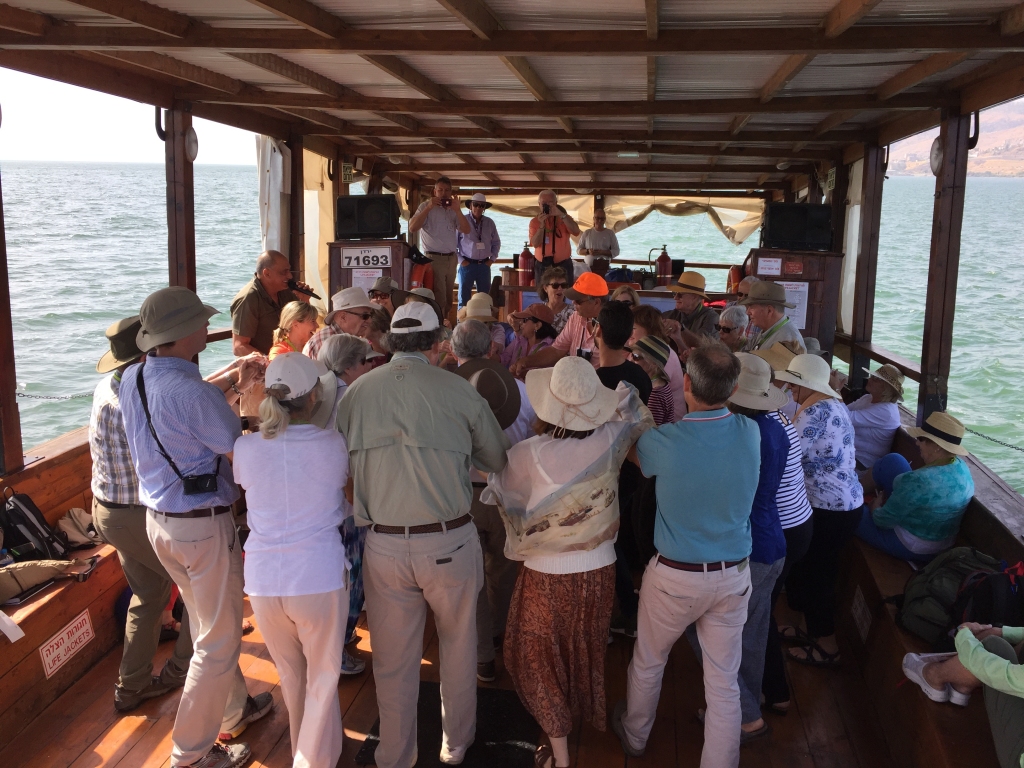
Before I was ready for the cruise to end, we had almost reached our destination on the other side of the lake, where it was much less developed. Here the hills looked parched, lacking trees or grass but dotted with scattered boulders. The arid pastoral scene dredged up a very old memory. I remembered as a child reading my favorite picture book about a little boy who hiked out to a similarly remote hilltop to see and hear the man Jesus. The boy’s mother had lovingly packed him a lunch of five barley loaves and two fish. Such crowds turned up and, in the haste of their desire to find the rabbi, many had sojourned without packing adequate food. In looking at the inhospitable hill, lacking both nutrition or shelter, I got a clearer picture of the scale of the problem of caring for a hungry mob.
The first miracle was the spirit of trust and generosity which inspired the boy to share his meal with the Master.
*****
Across the lake, we popped in to see the remains of an actual fishing vessel from the time of Christ. The boat was more narrow than I had imagined, and looked like it might hold 3-4 men, along with the nets and sail rigging. It was so simple, made of rough-hewn boards and thick nails, and yet thanks to having been lost underwater in the muddy bottom, it had survived for 2,000 years. Now it was attracting visitors from around the globe.
In the museum gift shop, I spotted a display of scented oils. Frankincense, myrrh, rose of Sharon, lily of the valley. I picked up the sample bottles and inhaled the various aromas. Then I sniffed another aromatic oil called Spikenard; this was an unfamiliar name. The scent was not floral, nor citrus, but foreign and spiced, rather like pine. It tickled my nose, suggesting in a whispered tone a connection to ancient times, to the skin of scented women, perhaps dancing girls, whirling in a smoky palace with bright scarves floating like waves of color.
Yes, I found it alluring, even though the scent was not fashionable nor in the modern style. After leaving the gift shop, I waved the aromatic oil under the noses of several friends, who wrinkled their faces in distaste. What is that? they asked. I needed more clarity so I showed the box of Spikenard oil to our guide, Hanni. I told him that I was unfamiliar with this plant.
“Oh Spikenard, yes,” Hanni said. “That is the perfume used by Mary Magdalene when she anointed Jesus’ feet.”
 My eyes grew wide; at first, I thought Hanni was teasing me but he assured me he was quite serious and then Jeff Miller confirmed the correlation between this mystery plant and Mary Magdalene. The tale of Mary’s redemption and generous love for Jesus has always moved me deeply. And here I was, an ignorant pilgrim holding a vial of the precious scent that she had poured out upon the feet of Jesus, a scent I had selected by hunch rather than head knowledge.
My eyes grew wide; at first, I thought Hanni was teasing me but he assured me he was quite serious and then Jeff Miller confirmed the correlation between this mystery plant and Mary Magdalene. The tale of Mary’s redemption and generous love for Jesus has always moved me deeply. And here I was, an ignorant pilgrim holding a vial of the precious scent that she had poured out upon the feet of Jesus, a scent I had selected by hunch rather than head knowledge.
This served as a passageway opening into the past. At last, I was beginning to feel the link between the modern Israel with its tour buses and museums, its hotels and plentiful ice cream stands, its traffic congestion and its trinket shops, and the life and times of my Jesus.
****
The previous day at the museum with the interpretive Nazarene village, we saw an olive mill where they made oil. First the olives were crushed by a millstone, with the stone moving in a circle over the olives in a vat. A donkey would have been yoked to the rudder that controlled the millstone, providing the power.
Eventually the olives would be ground into a thick, moist paste. A person would scoop the paste into a shallow basket with a hole in the center. The weave of this basket was loose enough that oil could drip through it. The paste would be placed in perhaps 8 or 10 of these baskets. The baskets were stacked atop on another above a collection container. Next would follow a series of 3 pressings to extract the oil.
The first pressing, or Virgin pressing, was done by hand, using the weight of the stacked baskets. This produced the highest quality oil and these first fruits were given to the Temple priests as an offering. The second pressing used a lever with a weight, and this oil was still good enough for eating. The third pressing used more weights to squeeze the dregs of oil out of the pulverized olives, and this oil was not suitable for eating. This third pressing produced oil for household uses such as for oil lamps or for medicinal ointments.
All the Jews of Jesus’ day were familiar with this process. Our guide made the observation that when Jesus was praying in the Garden of Gethsemane, praying that the cup of suffering might be passed from his lips, he was in the garden whose name meant “olive press”.
He was under extreme pressure and, like the olive paste, he went through three rounds of it, praying and eventually sweating blood while his three most beloved disciples — Peter, John, and James — slumbered instead of assisting him with their prayers. The visual of the olive press and its symmetry to the passion of Christ proved once again how God uses the simple things of this world to teach us how to see the deeper truths of his kingdom.
We also learned that Joseph and Jesus likely built houses from stone, rather than working as carpenters who fashioned furniture from wood. Our guide suggested this could explain why Jesus made so many references to stones in his teaching: the rock that the builders rejected, would be better to tie a millstone around someone’s neck, upon this rock I will build my church…..
Nazareth had its own small synagogue, which means meeting house. This would have been the place where local boys received education, as well as the place of worship and other community events. The Nazarene Village museum had built an example: the small rock, mud, and wood beam structure had a large door which, when kept open, proved airflow into the dark and cool space.  It was a relief to get out of the sun and dust and sit on a wooden bench inside. This respite from the outside elements made the prospect of going into the synagogue much more appealing. In this desert climate, without air conditioning, the heat saps your energy, and I can’t fully comprehend how the ancients managed to do so much walking and physical labor in these conditions. Of course they started early and sought shelter as needed.
It was a relief to get out of the sun and dust and sit on a wooden bench inside. This respite from the outside elements made the prospect of going into the synagogue much more appealing. In this desert climate, without air conditioning, the heat saps your energy, and I can’t fully comprehend how the ancients managed to do so much walking and physical labor in these conditions. Of course they started early and sought shelter as needed.
And they had no choice!
************************
 MOUNT OF THE BEATITUDES—At the place where Jesus gave the Sermon on the Mount, there stands a checkerboard stone church built of the ubiquitous white limestone and black volcanic rock. The small church overlooks the Galilean valley with its natural amphitheater where Jesus is said to have taught the Beatitudes such as “blessed are the peacemakers for they will be called the sons of God”.
MOUNT OF THE BEATITUDES—At the place where Jesus gave the Sermon on the Mount, there stands a checkerboard stone church built of the ubiquitous white limestone and black volcanic rock. The small church overlooks the Galilean valley with its natural amphitheater where Jesus is said to have taught the Beatitudes such as “blessed are the peacemakers for they will be called the sons of God”.
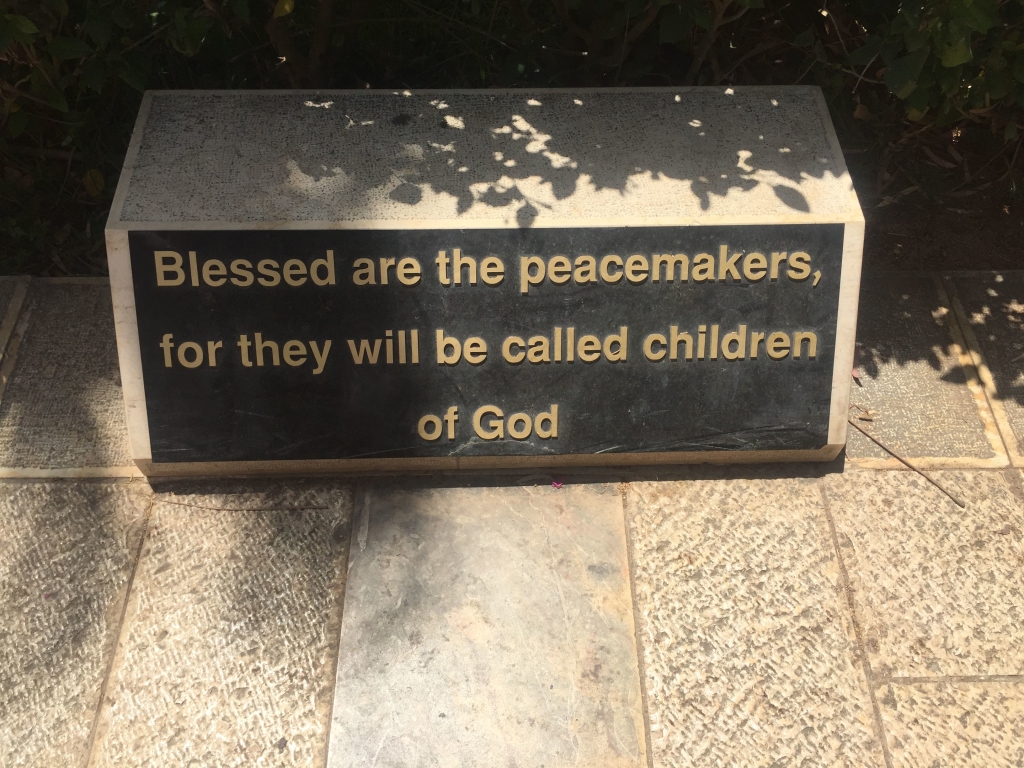 Many consider this the most famous speech ever given, and scholars are still arguing about what he meant. Our rector Jeff Miller spoke to us in the garden there and taught that when Jesus said “blessed are the poor in spirit,” he meant we should approach God from a position of humility in recognizing that we could do nothing on our own to deserve to be God’s beloved ones. We need a savior, and recognizing this about ourselves is the first step toward being happy.
Many consider this the most famous speech ever given, and scholars are still arguing about what he meant. Our rector Jeff Miller spoke to us in the garden there and taught that when Jesus said “blessed are the poor in spirit,” he meant we should approach God from a position of humility in recognizing that we could do nothing on our own to deserve to be God’s beloved ones. We need a savior, and recognizing this about ourselves is the first step toward being happy.
Jeff spoke to us a large, blessedly well shaded garden on the church grounds. All of these sites are owned by various religious orders, such as the Franciscans, and many have guest houses for pilgrims on their grounds. They are set up to accommodate thousands of day trippers too. Individual worship sites have been set up throughout the Beatitudes garden, set apart like covered picnic tables in a park but with an altar and benches. Our guide Hanni would make reservations in advance for us to use these open air gathering spots. In a given day, we might visit five sacred places, and generally at two locations we would gather for worship or teaching from our priests Jeff and Andrew, as well as hymn singing.
Accomplishing all of this and herding 45 St. Philips pilgrims in and out of the bus and through sacred birth sites, burial places, baptism waters, ancient Hebrew villages, and Roman ruins meant we had to keep to a tight schedule, some days getting on the tour bus by 7:30 in the morning.
Today we visited Bethlehem and were on the go for nine solid hours in the dust and bright heat. We returned to our hotel exhausted but uplifted.
****
One highlight of our group worship came when we received Holy Communion by the Sea of Galilee. The backdrop of lake water was light turquoise, flat and smooth, and coming across the water, a warm breeze was blowing around us and caressing our skin. Jeff preached on Peter’s three-fold betrayal of Jesus and the subsequent three times the Risen Christ asked Peter if he loved him. Jesus was giving Peter a means to wipe away his denials in order to bring him back into true fellowship.
****
On Sunday Jeff Miller and Andrew O’Dell wore their black shirts and clerical collars rather than their usual golf shirts and khaki trousers. “In the Holy Land, people treat you differently when you are dressed as s priest,” Jeff told the group. “But is it better or is it worse?”
At many of the tourist stops, there are hundreds of pilgrims lined up to get inside the sacred place where the angels sang to the shepherds or Jesus healed Simon Peter’s mother-in-law or Jesus and his disciples gathered in the Upper Room for the last Passover.
The biggest crowd and longest line is at the church of the Nativity in Bethlehem where Christ was born. The security guards in the grotto chapel would rush people past the highlighted spot on the floor where a star marked the spot of Mary’s having brought Baby Jesus into the world. You are allowed to pass by quickly, stoop down and touch the star but the guards keep everyone moving along, two by two. While wearing his collar, Jeff was not urged to move on past like the pilgrims but rather the guards said deferentially, “Father, take your time.”
****
We are surrounded by hordes of faithful pilgrims at every site, and it’s thrilling to see believers from so many nations, each wearing their own customary dress and speaking a hodgepodge of tongues. In Nazareth, we passed a Chinese pastor preaching to his flock in Mandarin. I was struck with the reality that he had more freedom to teach publicly about Jesus here than in his home country. I felt so happy for these Chinese pilgrims to be in the Holy Land. It must truly have been a feat for them to get here.
We all look and sound different but Christ is the common denominator. We’ve seen travelers wearing batik African robes and speaking French from the Ivory Coast; Spanish speaking Indians from the Andes Mountains, with women wearing those little bowler hats; Brits, Americans, South African pilgrims, and many sojourners from India.
Leaving the church of the Primacy of Peter, I saw a middle-aged woman in a sari with a plait down to the middle of her back. Her braid was not clasped and the ends were starting to come unwound. Her companion “sister” had a similar long braid fastened at the bottom by an overly large hair clip, the kind that we might use near the top of the head to pull back a bulk of hair.
These women did not seem to have any ponytail holders. Since I had been saved that morning from a saggy slip by safety pins from a fellow Charleston traveler, and that had got me thinking about how nice it is when people help one another and share, I immediately began searching my purse for a ponytail holder.
Sure enough I had one. I was walking past the group of Indian pilgrims to exit the church grounds so I simply stopped beside them and held out the brown elastic ring to the woman whose braid needed securing.
It was clear from the puzzled look on her round brown face that she did not know what I was offering. I motioned toward her braid and another Indian woman, also in a colorful sari, took the elastic band and nodded sagely but then started to slide to the wrong end of the plait.
So I waved my hand to stop her and pointed at the bottom of the braid. Both women and several more who had gathered to watch seemed amused and yet confused.
They allowed me to assume control and twist the band into place to cinch the braid in place.
When they saw what I was accomplishing with such a simple device, the women were giggling and whispering happily to one another in some Indian dialect. They reminded me of fluttery butterflies, so innocent and feminine. They were clearly surprised and pleased that this pale Anglo woman had taken an interest in them. We nodded and smiled at one another before I walked away to climb back on the tour bus.
The next day in Jerusalem, we were walking down from the Mt. of Olives on a steep, narrow road that was clogged with pilgrims. A large group of Indian pilgrims was headed our way and mixed in with us on the road. One man, about 35 years old, looked at me full in the face, beamed and exclaimed, “God bless you!”
He was full of the joy of the Lord.
“Thank you,” I said, feeling honored to be the recipient of his well wishes. He told me they were from the south of India. He went and fetched a lovely lady in a turquoise sari and proudly presented her to me. “This is my wife,” he said.
We exchanged warm smiles and happy greetings, all the while passing between very high walls that enclosed the ancient Jewish graveyards on either side.
We were making our way to the Garden of Gethsemane, and it was uplifting to share in this unexpected fellowship. Another woman in a burgundy sari spoke good English and wanted to talk to me. “The Lord has given me the opportunity to be baptized here in Jerusalem,” she said, bursting with happiness.
“How wonderful,” I replied.
“I am a new believer, and the Lord allowed me to be baptized and also to take my first communion here In Jerusalem,” she said.
We paused a moment to talk but my St. Philip’s group had just turned a corner and disappeared from view behind one of the walls. I needed to catch up or risk being lost in this crowd of pilgrims. While moving along, I managed to learn she and her family had been unbelievers who met Jesus when someone sent them a Bible.
I was shocked! Someone sends them a Bible and they find Christ? Obviously the timing of the Bible’s arrival had been at an opportune moment. Their hearts opened to this good news and now here they were, filled with Holy joy.
“Please pray for me and my husband, and for my son,” she shouted toward me as we parted. I assured her that I would. And I did, trusting that prayers lifted up on this sacred hilltop would rise straight to Heaven.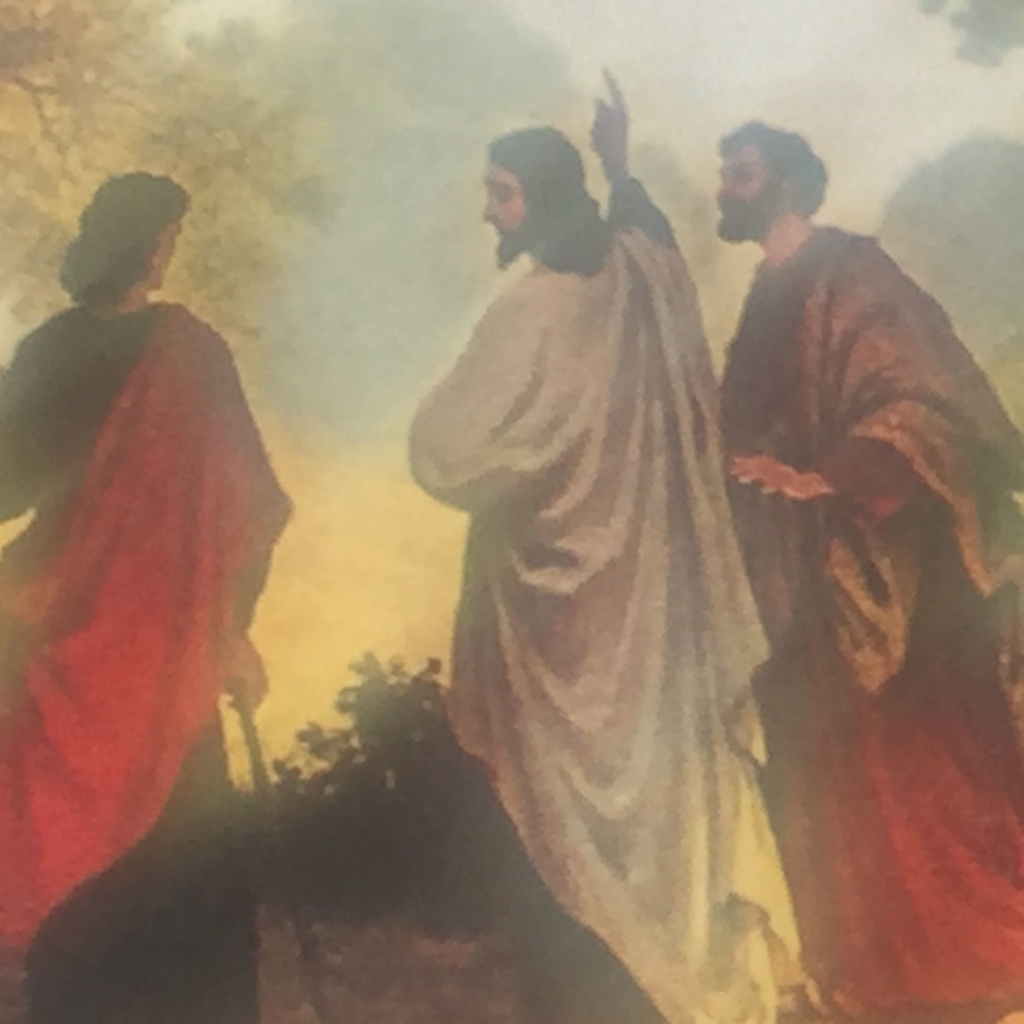
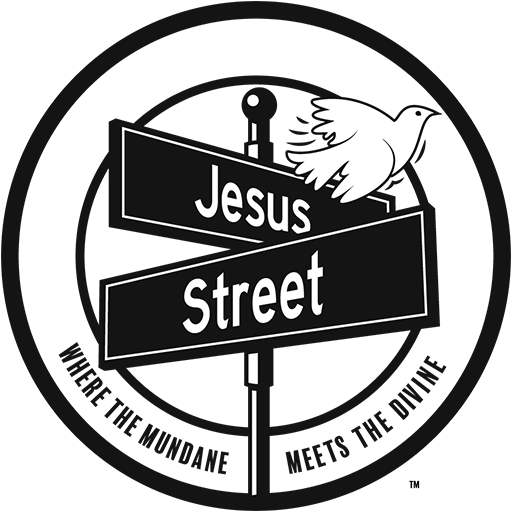
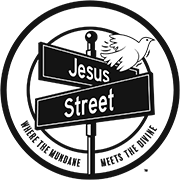



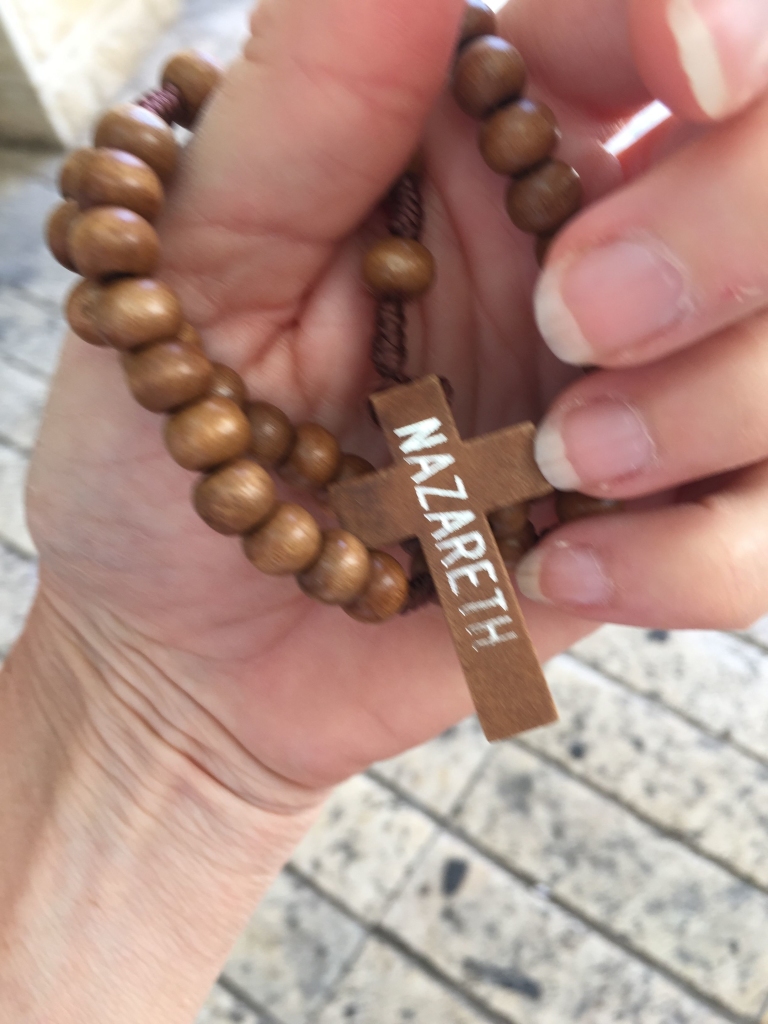

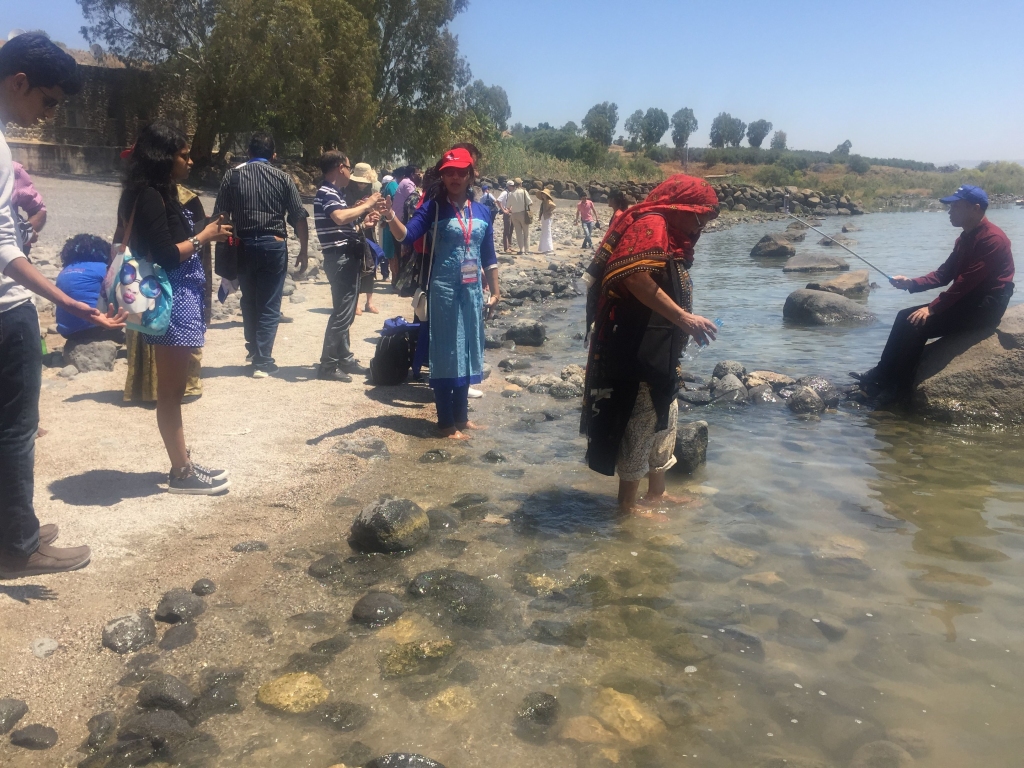
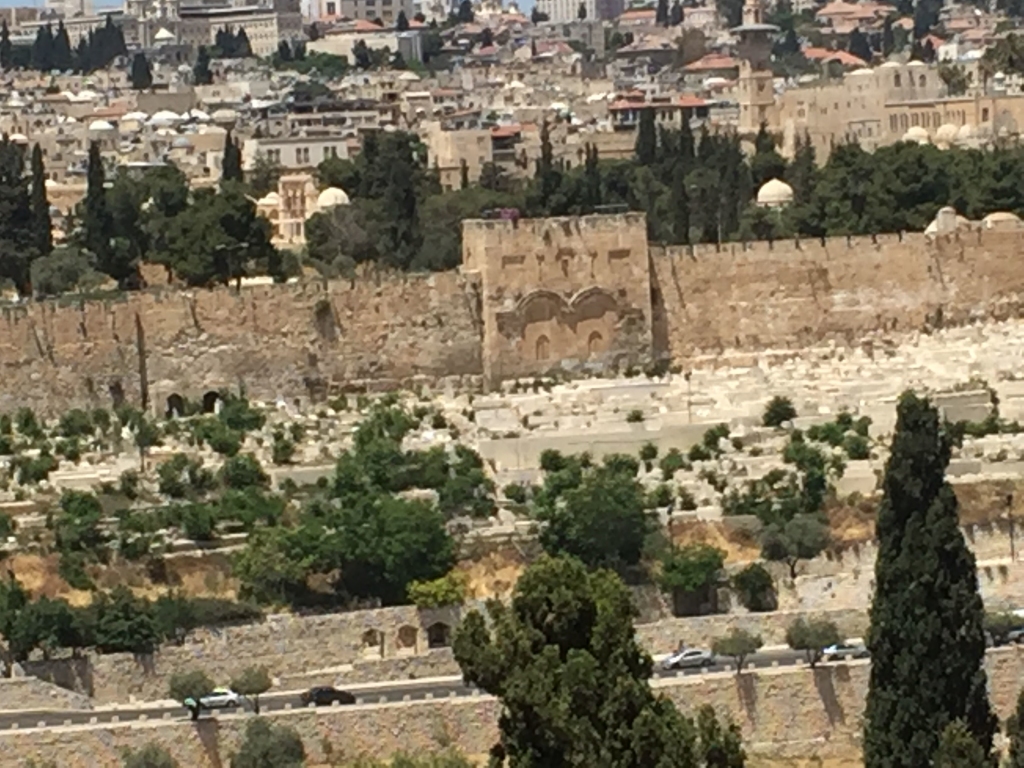
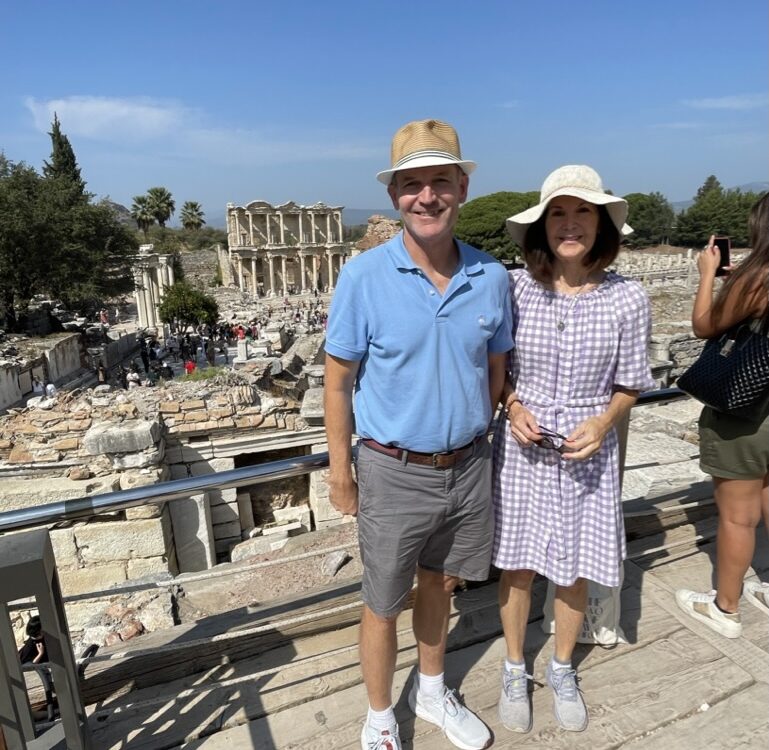
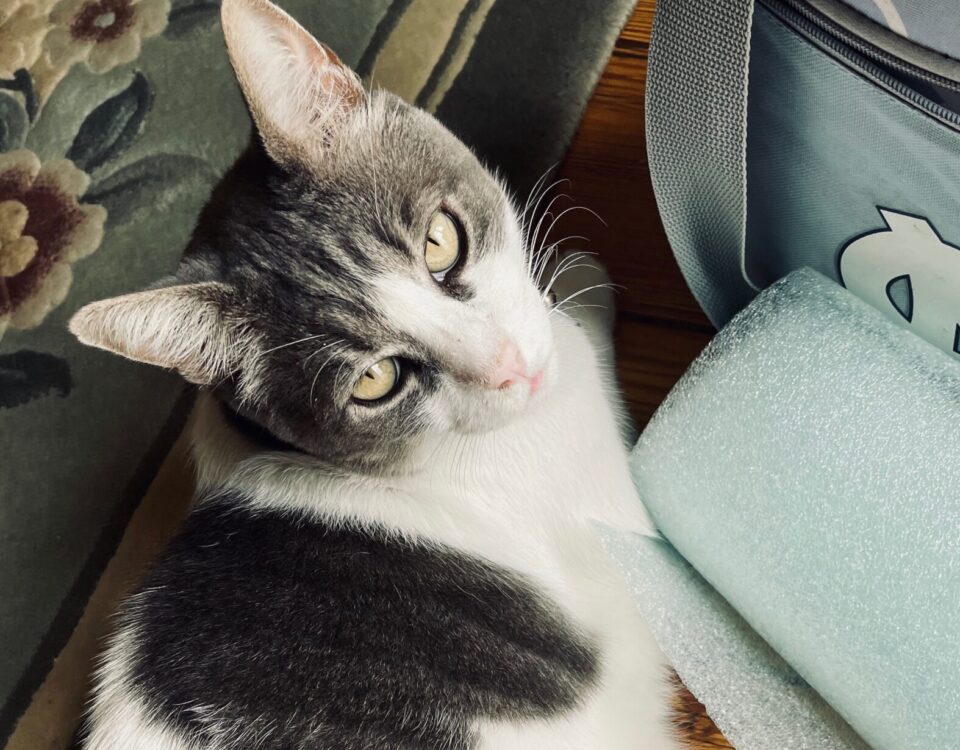

1 Comment
Thank you pringle, I am still in Jerusalem. It has been interesting, Jerusalem is a dichotomy, Orthodox Jews dislike Muslims but they tolerate them, however they despise Christians. The priests have told me that they spit at them, sometimes throw stones and want to bar them from wearing their vestments; he said they look down on Christians because they are the chosen race. The Armenians whose Church and surrounding area I visited, are close to the Jewish section and are constantly harassed by the Jews who want their real estate. Muslims do not interact much with Jews, they often work in enial positions for secular Jews, they too hate christians even though they exist from Christian pilgrims. I commented to a Christian jewellery that their personalities and behaviour was very similar, he told me his father had made the same comment, adding, They are cousins both are the sons of Abraham. A Christian cafe owner said the Christians are peaceful and try to coexist but they are a small 1% minority who nobody wants. Isis is not trying to destroy Israel or the Jews it is after Christians, of course bombing Paris probably did not kill any – that would have been like targeting a needle in a haystack.